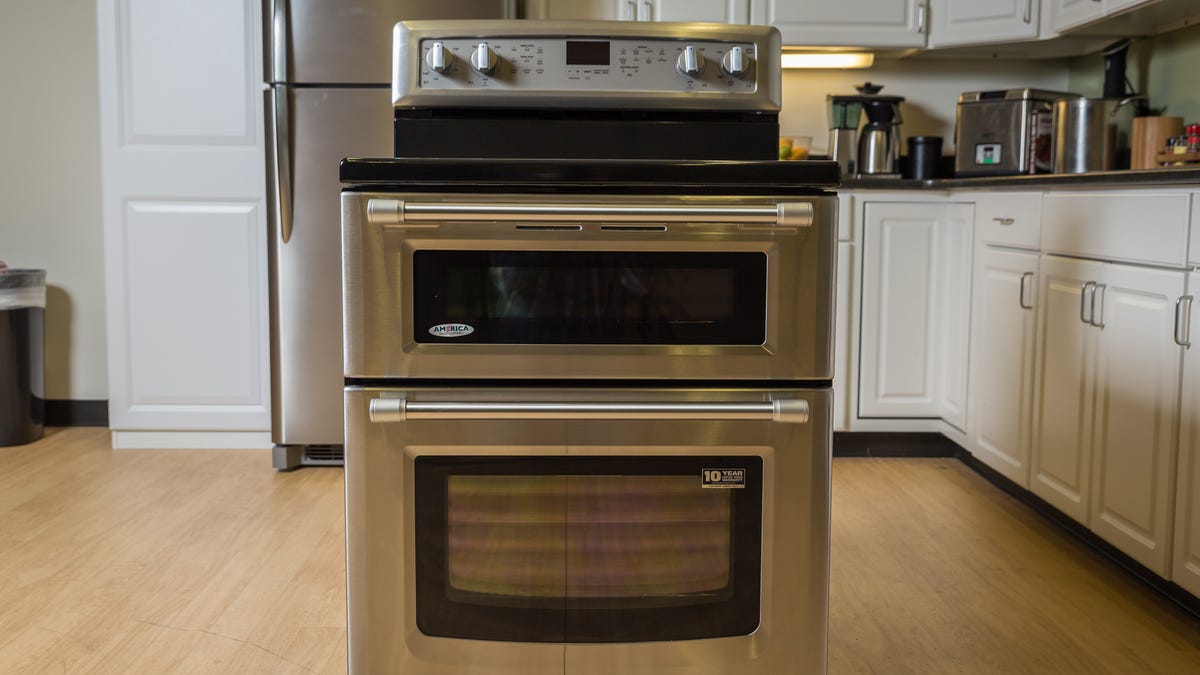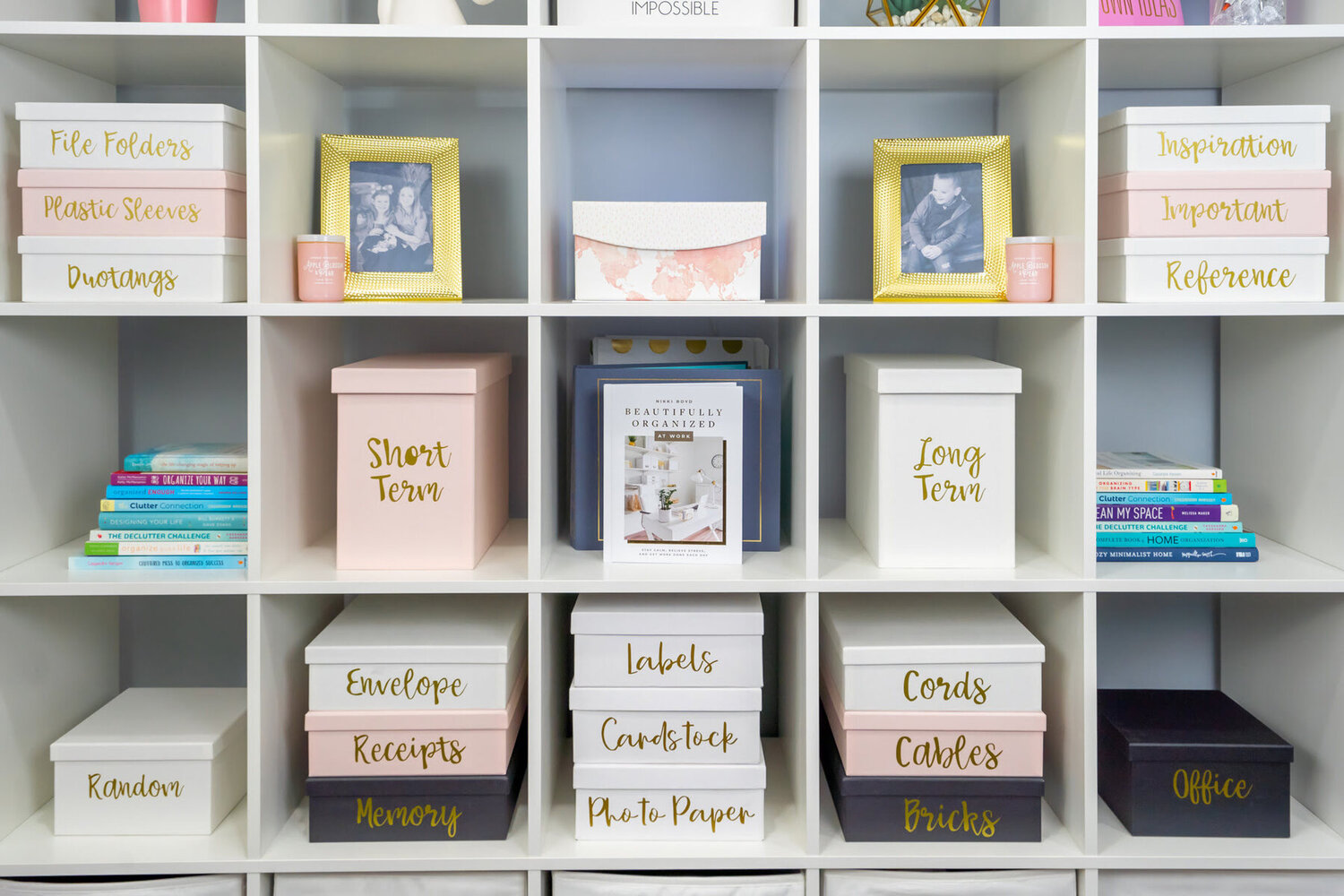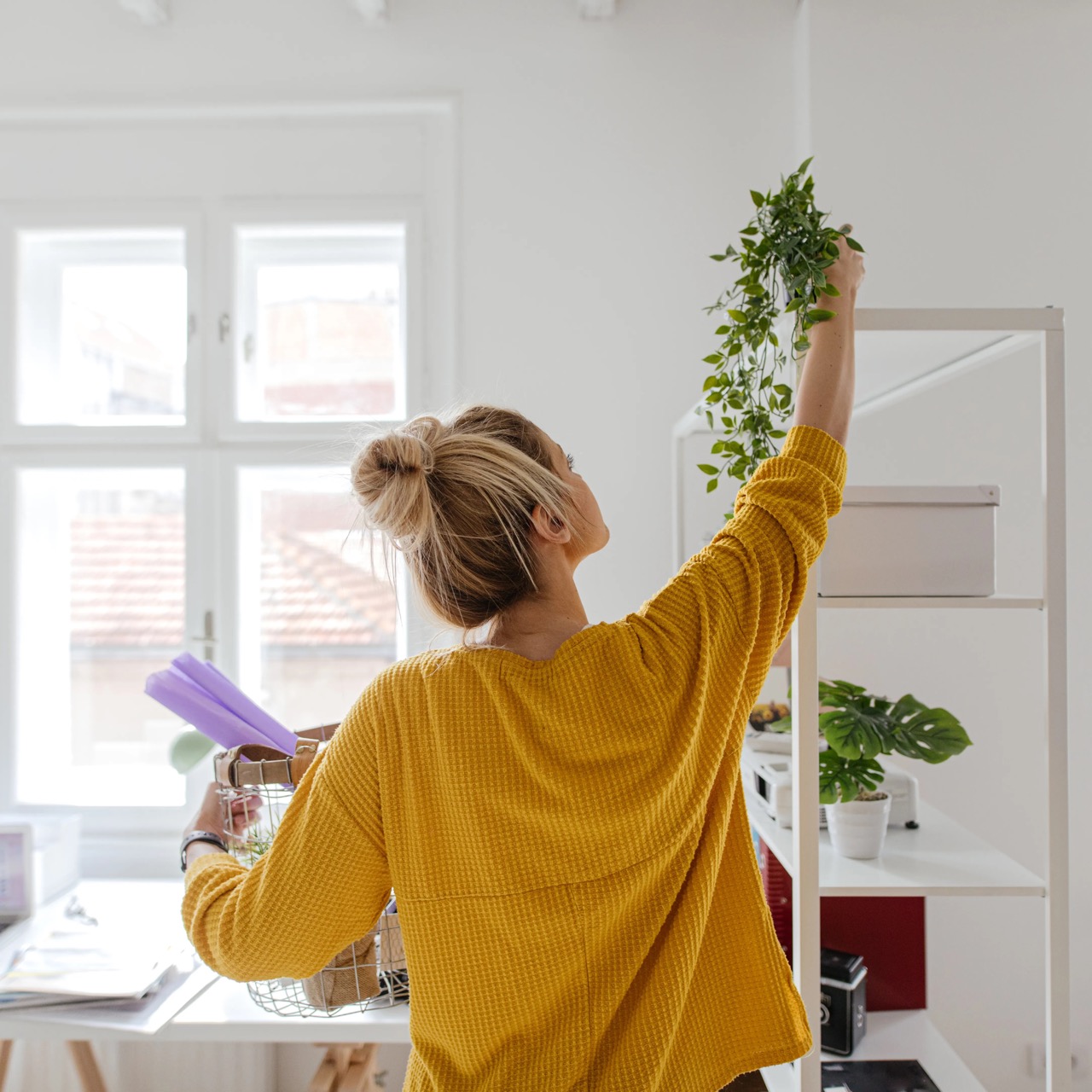Home>Interior Design>What’s The 20/20 Rule For Decluttering? Professional Organizers Explain


Interior Design
What’s The 20/20 Rule For Decluttering? Professional Organizers Explain
Modified: January 7, 2024
Learn the 20/20 rule for decluttering from professional organizers. Discover how this interior design technique can transform your space and create a more organized and harmonious environment.
(Many of the links in this article redirect to a specific reviewed product. Your purchase of these products through affiliate links helps to generate commission for Storables.com, at no extra cost. Learn more)
Introduction
Decluttering is a popular trend that has gained significant attention in recent years. Many people are realizing the benefits of simplifying their living spaces and getting rid of unnecessary possessions. However, the task of decluttering can be overwhelming, especially if you have accumulated years’ worth of belongings.
That’s where the 20/20 rule comes in. This decluttering approach, also known as the “one in, one out” rule, is a simple yet effective strategy to help you maintain an organized and clutter-free home. The 20/20 rule is widely recommended by professional organizers and interior designers for its practicality and sustainable results.
In this article, we will delve into the details of the 20/20 rule and how it can transform your living space. We will explore how this rule works, the benefits it offers, and provide tips on how to implement it effectively. Additionally, we will discuss common mistakes to avoid and share real-life examples of successful decluttering using the 20/20 rule.
So, if you’re ready to regain control over your surroundings and create a more harmonious living environment, let’s dive into the world of the 20/20 rule for decluttering.
Key Takeaways:
- Embrace the 20/20 rule for decluttering to maintain balance and prevent overwhelming accumulation of belongings. It encourages mindful consumption and fosters a more organized, stress-free living space.
- Implement the 20/20 rule effectively by setting boundaries, regularly decluttering, and valuing quality over quantity. Avoid common mistakes and transform your living space with mindful choices.
What is the 20/20 rule for decluttering?
The 20/20 rule for decluttering is a straightforward concept that involves removing one item for every new item you bring into your living space. The idea behind this rule is to maintain a balance between the items you acquire and the items you let go of.
Under the 20/20 rule, whenever you purchase a new piece of clothing, a household item, or any other possession, you commit to getting rid of one similar item. This ensures that your belongings stay organized, and you prevent the accumulation of unnecessary clutter.
The rule gets its name from the equal exchange it requires: for every 20 items you possess, you need to declutter and remove 20 items from your space. This rule encourages mindful consumption and prevents the accumulation of unused or unwanted items.
Implementing the 20/20 rule can help you develop a conscious shopping habit. Instead of mindlessly adding more items to your collection, you consider the value and necessity of each new purchase. Knowing that you will have to let go of something else encourages you to make more intentional decisions about what you bring into your home.
This rule is not just limited to physical possessions; it can also be applied to digital clutter. In today’s digital age, we often accumulate numerous files, photos, and documents on our devices. The 20/20 rule can be extended to keeping your digital space organized and clutter-free. For every new file or app you download, make a commitment to delete or organize a similar number of files.
By incorporating the 20/20 rule into your decluttering routine, you can create a more sustainable and organized living space. Not only does it prevent an overwhelming buildup of belongings, but it also encourages you to be mindful of the items you bring into your life.
How does the 20/20 rule work?
The 20/20 rule for decluttering is a relatively simple concept, but understanding how it works and applying it effectively is key to its success.
The first step in implementing the 20/20 rule is to assess your current belongings. Take the time to evaluate the items you own and identify those that no longer serve a purpose or bring you joy. This initial decluttering process will help you create breathing space and make way for new items that truly enhance your life.
Once you have decluttered your space and created a more organized environment, the maintenance phase of the 20/20 rule begins. The rule encourages you to be mindful of the items you bring into your home. Before making a new purchase, ask yourself if the item is necessary and if it will truly add value to your life.
If the answer is yes, then you commit to letting go of an item that is similar or serves a similar purpose. For example, if you buy a new sweater, you must declutter an old sweater from your wardrobe. This ensures that your clothing collection remains manageable and prevents overcrowding.
It’s important to remember that the 20/20 rule is not about simply getting rid of items for the sake of it. Rather, it’s about mindful decision-making and finding a balance between acquiring new possessions and releasing unnecessary ones. This allows you to maintain an organized and clutter-free living space.
To implement the 20/20 rule effectively, it can be helpful to set up guidelines for yourself. For example, you can establish a designated decluttering space where you place items that you no longer need. Regularly assess this space and determine which items can be donated, sold, or thrown away. This way, you keep the decluttering process ongoing and prevent any accumulation of excess belongings.
The 20/20 rule is a flexible approach that can be tailored to your specific needs and circumstances. If you find it challenging to let go of items, you can adjust the ratio to better suit your comfort level. For example, you might choose to follow the 10/10 rule or the 30/30 rule, depending on what feels manageable to you.
Remember, the goal of the 20/20 rule is not to become minimalistic, but rather to create a harmonious and clutter-free environment where you can truly enjoy the items you own. By being mindful of your consumption and committing to letting go of unnecessary possessions, you can maintain a balanced and organized living space.
Benefits of using the 20/20 rule
The 20/20 rule for decluttering offers numerous benefits that can significantly improve your living space and overall well-being.
1. Maintains an organized environment
By following the 20/20 rule, you ensure that your living space remains organized and free from unnecessary clutter. With each new item you bring in, you make the conscious decision to remove another item, preventing the overcrowding of belongings. This not only creates a visually pleasing environment but also makes it easier to find and access the items you need.
Read more: How To Fix E2 Error In A Washing Machine
2. Promotes mindful consumption
The 20/20 rule encourages you to be more mindful of your purchases. Instead of acquiring items impulsively, you must consider whether they truly add value to your life. This leads to more intentional and thoughtful buying decisions, preventing you from accumulating items that end up going unused or becoming clutter.
3. Saves money
By following the 20/20 rule, you become more aware of your spending habits. You are less likely to buy unnecessary items since you know that you must let go of something else in return. This can help you save money in the long run by reducing impulsive purchases and focusing on acquiring items that are truly essential or meaningful to you.
4. Reduces stress and overwhelm
A cluttered and disorganized living space can contribute to feelings of stress and overwhelm. The 20/20 rule helps prevent the accumulation of excess belongings, making it easier to maintain a sense of order and harmony in your surroundings. This can lead to a calmer and more peaceful mindset.
5. Environmental benefits
By practicing the 20/20 rule and being more mindful of your consumption, you contribute to reducing waste and the impact on the environment. By decluttering and letting go of unnecessary items, you can donate or sell them, giving them a second life instead of ending up in landfills. Additionally, by consuming less, you reduce the demand for new products, which can help conserve resources.
6. Fosters gratitude and appreciation
The 20/20 rule prompts you to appreciate and value the items you own. When you have to let go of something in order to bring in a new item, you become more conscious of the value each possession holds in your life. This cultivates a sense of gratitude for what you have and encourages you to truly enjoy and make the most of your belongings.
By implementing the 20/20 rule, you can experience these benefits and transform your living space into a clutter-free, organized, and harmonious environment. It enables you to live a more intentional and mindful lifestyle while appreciating the value of the things that truly matter to you.
Tips for implementing the 20/20 rule effectively
While the 20/20 rule for decluttering is relatively simple, there are some tips that can help you implement it successfully and maximize its effectiveness.
1. Start with a thorough decluttering
Before implementing the 20/20 rule, take the time to declutter your space thoroughly. Sort through your belongings and get rid of anything that no longer serves a purpose or brings you joy. This initial clearing out will create a solid foundation for implementing the rule moving forward.
2. Set boundaries and guidelines
Establish boundaries and guidelines for yourself to ensure that the 20/20 rule is consistently applied. Determine which areas of your home are subject to the rule, and clearly define what constitutes a “similar item” when deciding what to declutter. This will help you maintain consistency and prevent any confusion.
3. Make decluttering a regular practice
To maintain the balance between acquiring new items and decluttering, make decluttering a regular practice. Set aside dedicated time, whether it’s once a month or once a season, to assess your belongings and identify items that can be let go of. Regular decluttering sessions ensure that your space remains organized and clutter-free.
4. Donate, sell, or recycle items
When decluttering, consider donating, selling, or recycling the items you no longer need. This way, they can find a new home or serve a purpose for someone else. Avoid simply throwing away items that are still in good condition but no longer needed.
5. Assess the value of new purchases
Before making a new purchase, assess the value and necessity of the item. Ask yourself if it aligns with your values, if it serves a purpose, and if it will truly bring you joy. Being mindful of the items you bring into your space will help you make more intentional and thoughtful buying decisions.
6. Get creative with repurposing
If you find it challenging to let go of certain items, consider repurposing them in creative ways. This allows you to give them new life and find a new use for them, instead of simply letting them take up space. Repurposing can be a fun and creative way to make the most of your belongings.
7. Focus on quality over quantity
The 20/20 rule emphasizes the importance of quality over quantity. Instead of accumulating a large number of items, focus on acquiring high-quality, meaningful possessions that truly add value to your life. This mindset shift can help you make more thoughtful choices and prevent unnecessary clutter.
By implementing these tips, you can effectively apply the 20/20 rule and create a balanced and clutter-free living space. Remember, the goal is not to become minimalist, but rather to find a sustainable balance between what you acquire and what you let go of.
Common mistakes to avoid while using the 20/20 rule
While the 20/20 rule for decluttering is a beneficial strategy, there are some common mistakes that people make when implementing this rule. By being aware of these pitfalls, you can avoid them and make the most out of the 20/20 rule.
1. Ignoring the quality of items being acquired
One common mistake is solely focusing on quantity instead of considering the quality of the items being acquired. The 20/20 rule is not about mindlessly getting rid of items or replacing them with new ones. It’s important to prioritize acquiring items that are durable, well-made, and truly add value to your life.
2. Failing to let go of enough items
Another mistake is not decluttering and letting go of enough items when bringing in new ones. If you continuously acquire new possessions without removing an adequate number of items, you may find yourself running out of space and struggling with clutter. Remember to maintain the balance by consistently decluttering and keeping your belongings in check.
3. Not assessing the functionality and relevance of current items
It’s crucial to regularly assess the functionality and relevance of the items you already own. As time goes by, our needs and preferences change, and certain items may no longer serve a purpose in our lives. Ignoring this and holding onto items that no longer have value can hinder the effectiveness of the 20/20 rule.
4. Overcomplicating the process
Sometimes, people tend to overcomplicate the decluttering process and the 20/20 rule. Remember, the rule is about balance and making conscious decisions about what you bring into your space. Avoid getting overwhelmed by trying to declutter your entire home in one go. Take it step by step and focus on one area at a time.
5. Mistaking sentimental value for practical value
While sentimental items can hold a special place in our hearts, it’s essential to differentiate between sentimental value and practical value. It’s okay to keep sentimental items, but make sure they truly enhance your living space and serve a purpose in your life. Sentimental items should not be kept at the expense of functionality and organization.
6. Procrastinating decluttering
Waiting too long to declutter can lead to a buildup of items and make the task more challenging. Avoid procrastinating and make decluttering a regular practice. Set aside dedicated time to assess and declutter your belongings, whether it’s once a month or once a season. Consistency is key to maintaining an organized living space.
By being mindful of these common mistakes, you can effectively implement the 20/20 rule and create a balanced and clutter-free environment. Remember, the goal is to cultivate mindful consumption and maintain a harmonious living space that truly reflects your values and needs.
Real-life examples of successful decluttering using the 20/20 rule
The 20/20 rule for decluttering has helped countless individuals transform their living spaces and create a more organized and balanced environment. Let’s explore some real-life examples of people who have successfully implemented the 20/20 rule.
1. Sarah’s wardrobe transformation
Sarah had a closet filled with clothes she rarely wore, resulting in a cluttered and overwhelming space. She decided to embrace the 20/20 rule and committed to removing one item from her wardrobe for every new piece she purchased. This prompted Sarah to carefully consider her choices and focus on quality over quantity. Over time, Sarah was able to declutter her wardrobe, leaving only the clothes she truly loved and wore regularly. Not only did this make getting dressed in the morning easier, but it also gave her a renewed sense of joy and appreciation for her clothing collection.
2. Mike’s digital decluttering journey
Mike realized that his digital devices were overflowing with files, photos, and apps that were rarely used. He decided to extend the 20/20 rule to his digital space and committed to deleting or organizing a similar number of files for each new file he downloaded. With this approach, Mike gradually decluttered his digital clutter and organized his files into well-structured folders. By implementing the 20/20 rule in his digital life, Mike created a more streamlined and efficient digital workspace, making it easier to find what he needed and avoid unnecessary digital clutter.
3. Emily’s kitchen simplification
Emily had a kitchen filled with various gadgets and appliances that rarely saw the light of day. She decided to apply the 20/20 rule to her kitchen and committed to decluttering one item for every new cooking tool or appliance she acquired. This forced Emily to evaluate the functionality and necessity of each item in her kitchen. As a result, she was able to clear out her cluttered cabinets and create a more organized and efficient cooking space. By focusing on quality over quantity, Emily found that she could do more with fewer items, making her time in the kitchen more enjoyable and less stressful.
4. Mark’s office transformation
Mark’s home office was cluttered with stacks of papers, old documents, and unused office supplies. He decided to adopt the 20/20 rule and committed to decluttering one item for each new item he brought into his office space. Mark systematically went through his papers, sorted and organized them, and got rid of outdated documents. He also donated excess office supplies that were no longer needed. By implementing the 20/20 rule in his office, Mark created a clean and organized workspace, allowing him to focus better and be more productive.
These real-life examples demonstrate the effectiveness of the 20/20 rule in decluttering and creating more organized living spaces. By consciously applying this rule and making mindful decisions about what to keep and let go of, individuals can transform their surroundings and experience the benefits of a clutter-free environment.
Conclusion
The 20/20 rule for decluttering has proven to be an effective strategy for creating organized and balanced living spaces. By committing to removing one item for every new item brought into our homes, we can maintain a sense of order and prevent the accumulation of unnecessary clutter.
Throughout this article, we explored the ins and outs of the 20/20 rule. We learned that it is not just about getting rid of items, but also about making intentional and mindful choices regarding what we bring into our lives. By implementing this rule, we can develop a conscious shopping habit, save money, and reduce stress and overwhelm.
Additionally, we discussed several tips for implementing the 20/20 rule effectively. Setting boundaries, regularly decluttering, and assessing the functionality of current items are just a few of the strategies that can help us succeed in maintaining a balanced living space.
We also highlighted common mistakes to avoid, such as ignoring the quality of items, procrastinating decluttering, and mistaking sentimental value for practical value. Being aware of these pitfalls allows us to make the most out of the 20/20 rule and prevent setbacks in our decluttering journey.
Finally, we explored real-life examples of individuals who successfully embraced the 20/20 rule and experienced the benefits of a decluttered space. From wardrobe transformations to digital and kitchen simplifications, these examples showcased the positive impact that the 20/20 rule can have on our lives.
In conclusion, the 20/20 rule offers a practical and sustainable approach to maintaining an organized living space. By being mindful of our consumption, regularly decluttering, and valuing quality over quantity, we can create a harmonious environment that truly reflects our values and enhances our well-being.
So, if you’re ready to take control of your living space and embark on a decluttering journey, give the 20/20 rule a try. You may be surprised at how this simple rule can have a transformative effect on your surroundings and bring more peace and clarity into your life.
Frequently Asked Questions about What’s The 20/20 Rule For Decluttering? Professional Organizers Explain
Was this page helpful?
At Storables.com, we guarantee accurate and reliable information. Our content, validated by Expert Board Contributors, is crafted following stringent Editorial Policies. We're committed to providing you with well-researched, expert-backed insights for all your informational needs.









0 thoughts on “What’s The 20/20 Rule For Decluttering? Professional Organizers Explain”